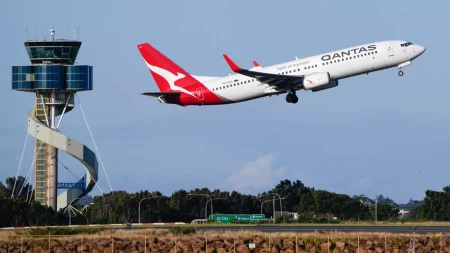The Rise of Set-Jetting: How the Pandemic Changed Our Travel Dreams
The COVID-19 pandemic transformed many aspects of our lives, including how we dream about travel. During those long months of lockdown, millions of us found solace in binge-watching television shows and movies, escaping to breathtaking landscapes and vibrant cities from the confines of our living rooms. Now, as travel restrictions have eased and the world has reopened, a fascinating phenomenon has emerged: “set-jetting,” where fans journey to the real-world locations of their favorite films and TV series. This trend, born from the intersection of pandemic-era entertainment consumption and post-restriction freedom, has dramatically altered the travel industry landscape and how many people choose their destinations.
The psychology behind set-jetting is remarkably human. When we immerse ourselves in stories, we form emotional connections not just with characters but with the places they inhabit. During lockdown, these fictional worlds became more than mere entertainment—they represented freedom, adventure, and possibility when real-world options were limited. The stunning scenery of shows like “The White Lotus” in Sicily, the rugged landscapes of “Yellowstone” in Montana, or the historic streets showcased in “Emily in Paris” became virtual windows to a world temporarily beyond reach. As these locations appeared on our screens week after week, they planted seeds of desire that blossomed into concrete travel plans once restrictions lifted, creating a powerful new motivation for tourism that bridges fantasy and reality.
What makes set-jetting particularly compelling is how it transforms the traditional tourist experience. Rather than simply checking off famous landmarks, set-jetters follow emotional itineraries, seeking specific scenes, views, or moments that resonated with them during their viewing experience. This approach creates a more personal, narrative-driven form of travel where visitors can step into stories that moved them. Tourism boards and local businesses have quickly recognized this shift, developing specialized tours, photo opportunities, and experiences that cater to fans of particular productions. From “Game of Thrones” tours in Croatia to “Lord of the Rings” experiences in New Zealand, destinations are increasingly marketing themselves through their on-screen identities, turning fictional connections into economic opportunities for local communities.
The economic impact of set-jetting has been substantial and sometimes unexpected. Smaller towns and previously overlooked regions have found themselves in the global spotlight after appearing in popular productions. The Yorkshire town of Keighley saw tourism surge following the success of “Downton Abbey,” while the tiny Croatian city of Dubrovnik struggled to manage the influx of visitors after serving as King’s Landing in “Game of Thrones.” During the pandemic recovery period, these screen-inspired trips have provided vital economic lifelines to tourism-dependent regions. However, this phenomenon also raises important questions about sustainability and authenticity. As crowds of fans descend on sometimes fragile locations, communities must balance economic benefits with environmental protection and preservation of local culture, ensuring that the places that captivated viewers on screen remain special in reality.
Social media has amplified the set-jetting trend exponentially, creating a self-reinforcing cycle of influence. As travelers share their recreations of famous scenes or moments of recognition at filming locations, they inspire others to follow in their footsteps. Platforms like Instagram and TikTok have become virtual galleries of set-jetting experiences, with hashtags like #emilyinparis, #whitelotussicily, or #yellowstonenationalpark connecting global communities of fans. This social sharing adds another layer to the experience—not only do travelers get to visit locations they’ve formed emotional connections with through viewing, but they also join a community of like-minded fans, sharing a unique form of cultural literacy that transcends traditional tourism. For many, especially younger travelers, this shareable, recognition-based form of travel provides both personal fulfillment and social currency.
As we look toward the future, set-jetting appears poised to become a permanent feature of the tourism landscape rather than a passing trend. Production companies and destinations are increasingly forming strategic partnerships, with locations sometimes selected specifically for their tourism potential. Meanwhile, advances in virtual reality and augmented reality technologies promise to further blur the lines between fictional worlds and real destinations, potentially creating hybrid experiences where visitors can more fully immerse themselves in narrative elements while physically present at filming locations. Whatever forms it takes, the fundamental appeal of set-jetting speaks to something deeply human: our desire to make tangible connections with stories that move us, to walk in the footsteps of characters we’ve come to care about, and to bring a bit of screen magic into our real-world experiences. Born from the unique circumstances of pandemic confinement and post-restriction freedom, set-jetting represents not just a travel trend, but a new way of relating to both entertainment and exploration in our increasingly media-saturated world.






